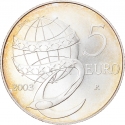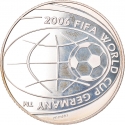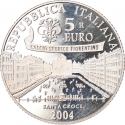You are about to finish your registration. Please check your mailbox (including spam folder). There should be a letter with a confirmation link. Check setting to make sure that your e-mail address is correct.
Send letter againDescription
The lira (plural lire) was the currency of Italy between 1861 and 2002. It was first introduced by the Napoleonic Kingdom of Italy in 1807 at par with the French franc and was subsequently adopted by the different states that would eventually form the Kingdom of Italy in 1861. It was subdivided into 100 centesimi (singular: centesimo), which means "hundredths" or "cents".
The term originates from libra, the largest unit of the Carolingian monetary system used in Western Europe and elsewhere from the 8th to the 20th century. The Carolingian system is the origin of the French livre tournois (predecessor of the franc), the Italian lira, and the pound unit of sterling and related currencies.
Artist: Luciana De Simoni
Obverse
_2012_11.11.2022_12.50-60.jpg)
|
Inside an oval pattern the towered head of Italy as drawn from the reverse of the 50 and 100 Lire banknotes issued by the Bank of Italy in 1944. Name of the author below. REPUBBLICA ITALIANA |
|---|---|
Reverse
_2012_11.11.2022_12.50_01-60.jpg)
|
On the low part the allegory of Liberty taken from the 20 centesimi coin issued in 1908 (KM# 44) and designed by Leonardo Bistolfi. Below the figure are the date and the mintmark. The value of the coin is in the centre surrounded by symbolic elements taken from other issues of Italian coinage. UNIFICAZIONE · MONETARIA · ITALIANA · |
| Edge |
Related coins
2006 Football (Soccer) World Cup in Germany
_2012_11.11.2022_12.50.jpg)
_2012_11.11.2022_12.50_01.jpg)





